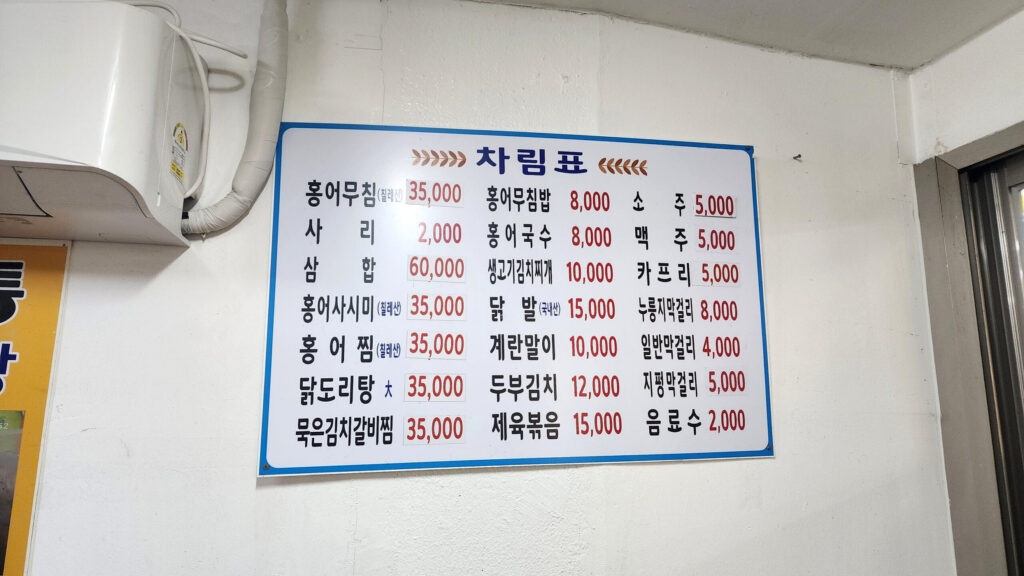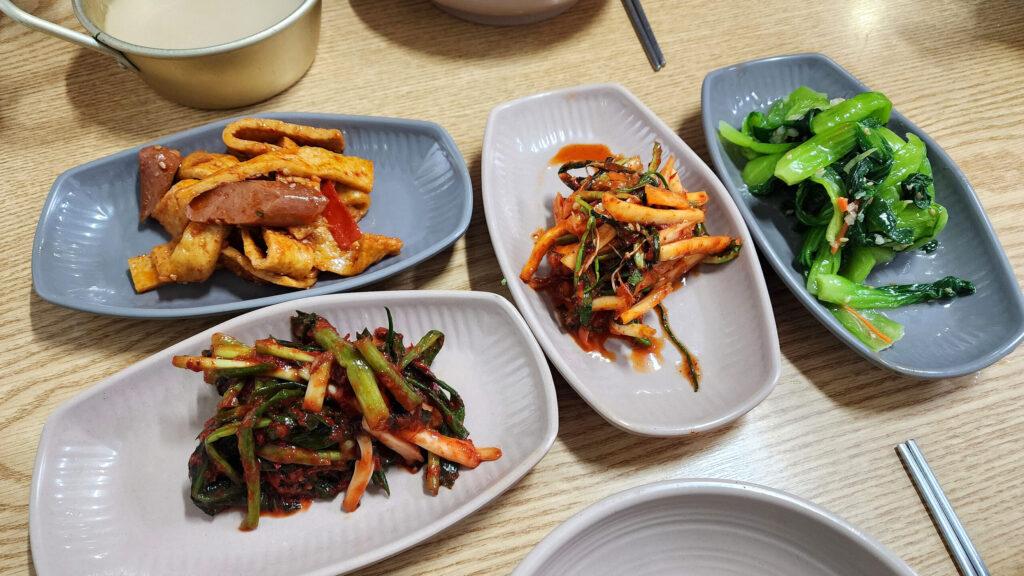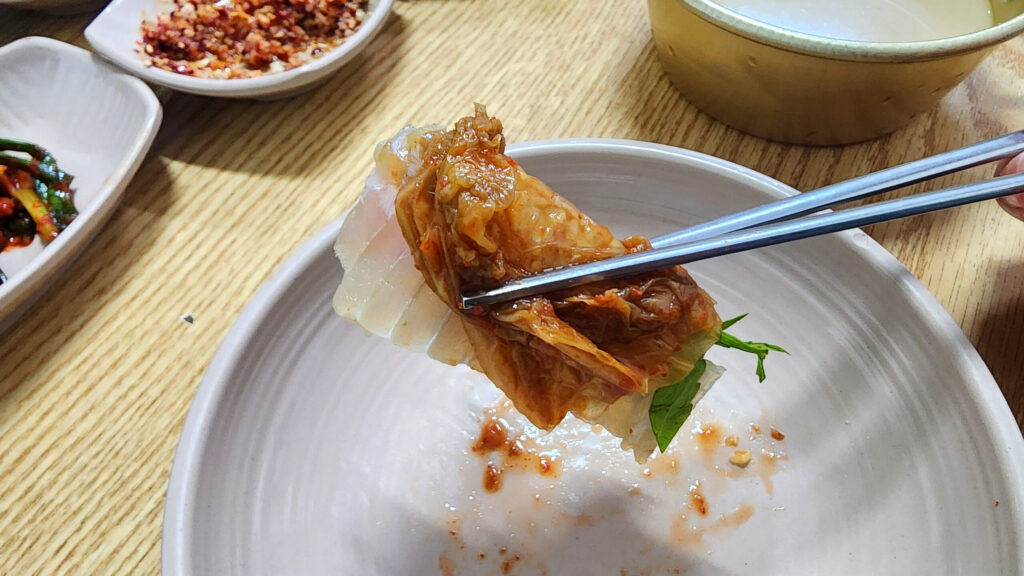

Fermented Skate in Korea — A Bold Tradition at Daehan Honggeo
Korea is home to one of the most pungent dishes in the world: HONGEO, or fermented skate.
Often said to be second only to surströmming in terms of strength, its signature ammonia-like aroma develops during fermentation.
But for those wondering—fresh skate doesn’t smell nearly as intense. It’s the fermentation that brings out that challenging character.
Outside of Korea, it’s almost impossible to find people who actually eat HONGEO.
In fact, it’s safe to say that nearly all of the world’s skate is consumed in Korea.
Because local production isn’t enough to meet demand, Korea now imports skate from Chile, Argentina, and Uruguay.
I visited a place called DAEHAN HONGEO, not far from the last spot I reviewed—SANGOL.
Of course, I ordered the HONGEO sashimi, and in true Korean fashion, paired it with a chilled bottle of MAKGEOLLI, the country’s beloved traditional rice wine.

A Touch of Jeolla-Style Flavor
In Korea, the southern Jeolla Province is widely known for having some of the country’s best and boldest flavors.
And I have a feeling the owner of this place might be from that region.
Why? Because before the HONGEO even arrived, the side dishes—especially the seasoned salads—were excellent.
There was green onion kimchi, spicy and aromatic, and a beautifully fragrant bellflower and wild chive salad.
For reference, wild chives (DALRAE) are a springtime ingredient often found in Korea’s seasonal cuisine.


Today’s Skate Was from Chile
Korean skate is incredibly expensive, so most HONGEO served at restaurants comes from Chile.
That used to mean “lower quality,” but these days, import and distribution systems have improved, and the Chilean product is actually very good.
The plate that arrived was neatly prepared and cut with practiced hands.
The flesh was pink and glossy—visually inviting—and the level of fermentation was moderate, allowing just enough of that signature aroma to come through without overwhelming the senses.


Sauces, Condiments, and How to Enjoy It
The dish came with an assortment of dipping sauces:
-
Ssamjang with sesame oil
-
Chojang (vinegared gochujang)
-
Salt sauce, mixed with chili powder, sesame seeds, sesame oil, and salt
-
Plus fresh vegetables for wrapping
Among them, the salt sauce became my favorite for its savory nuttiness.
Though aged kimchi (MUGEUNJI) didn’t come out automatically, I asked and the staff kindly brought some.
Judging by its sharp, tangy flavor, it had been fermented quite a while—just the way it should be.
With all these condiments, sides, and kimchi, you can enjoy HONGEO in a variety of ways, balancing its intensity however you like.
📷 Want to see more? Check out the full photo set on Instagram: [@kodak888]
